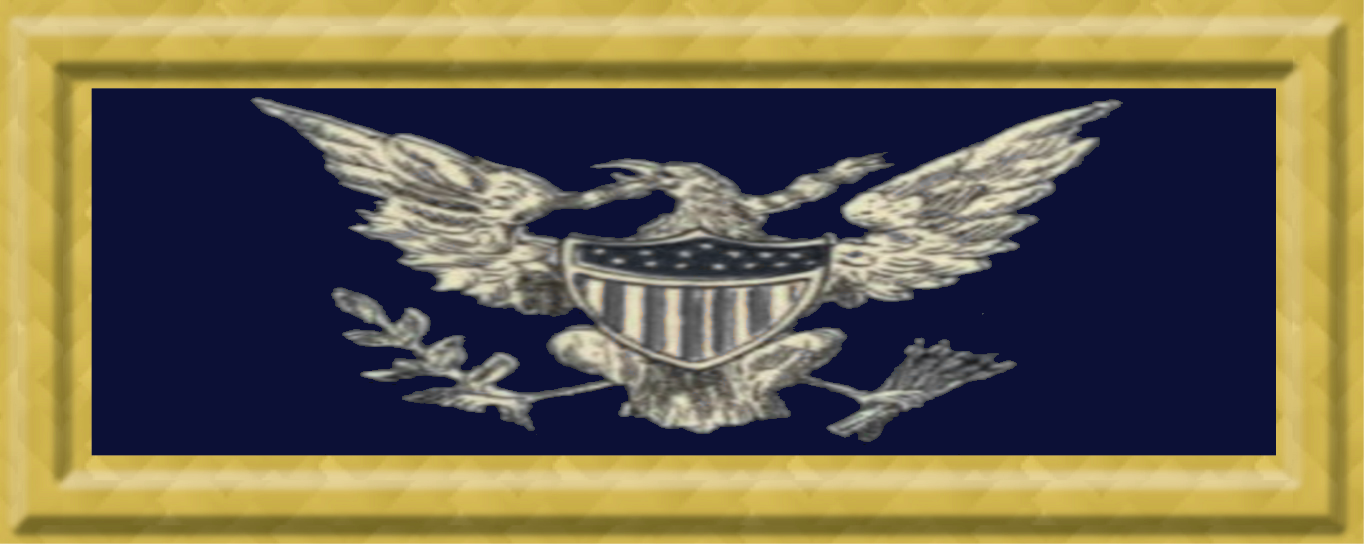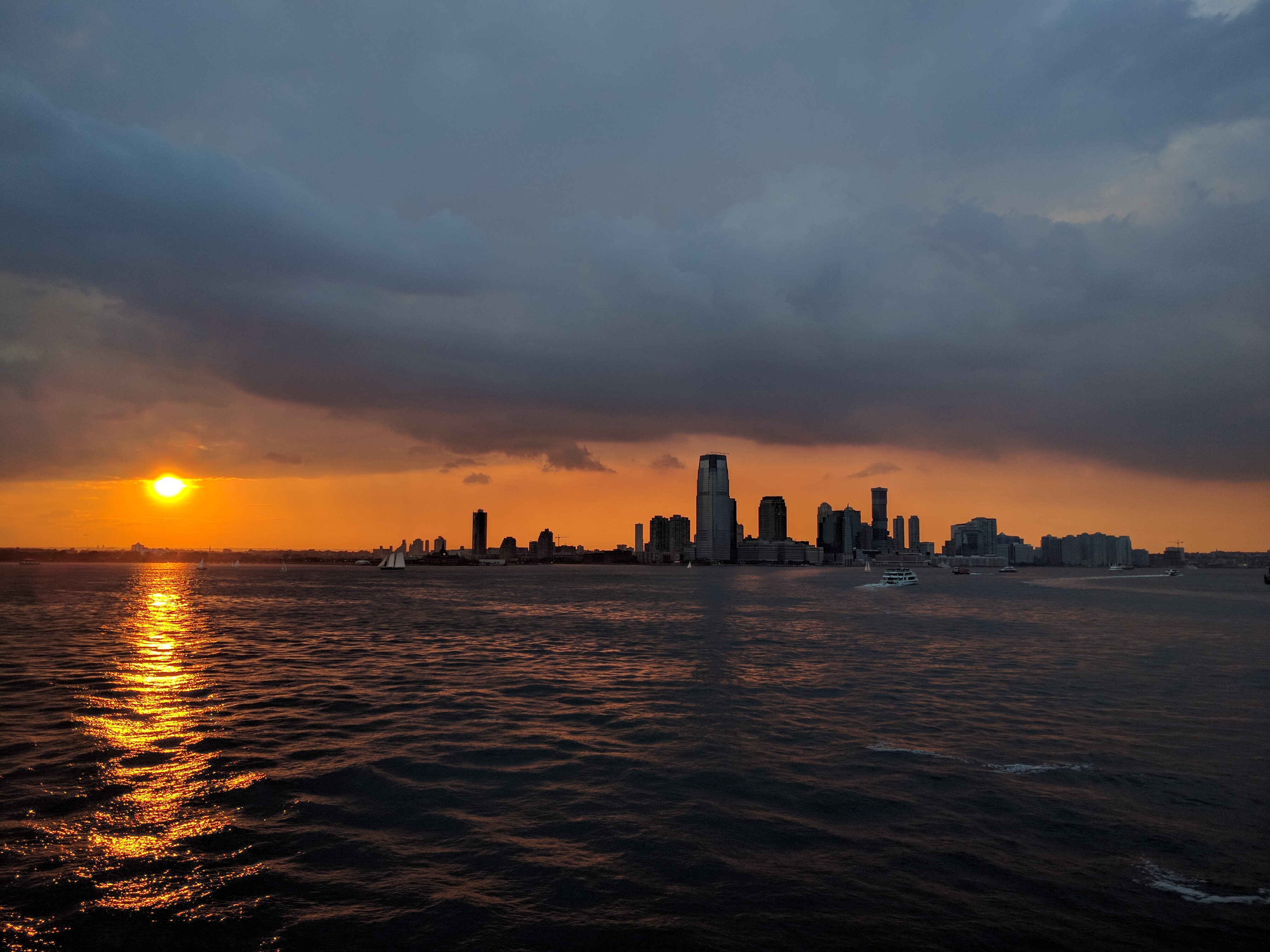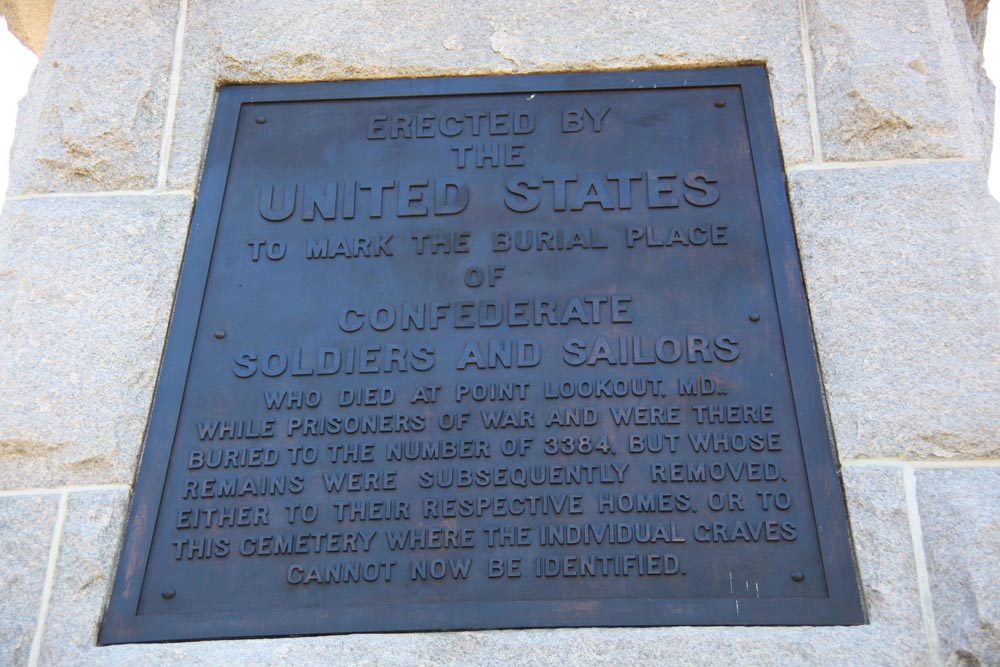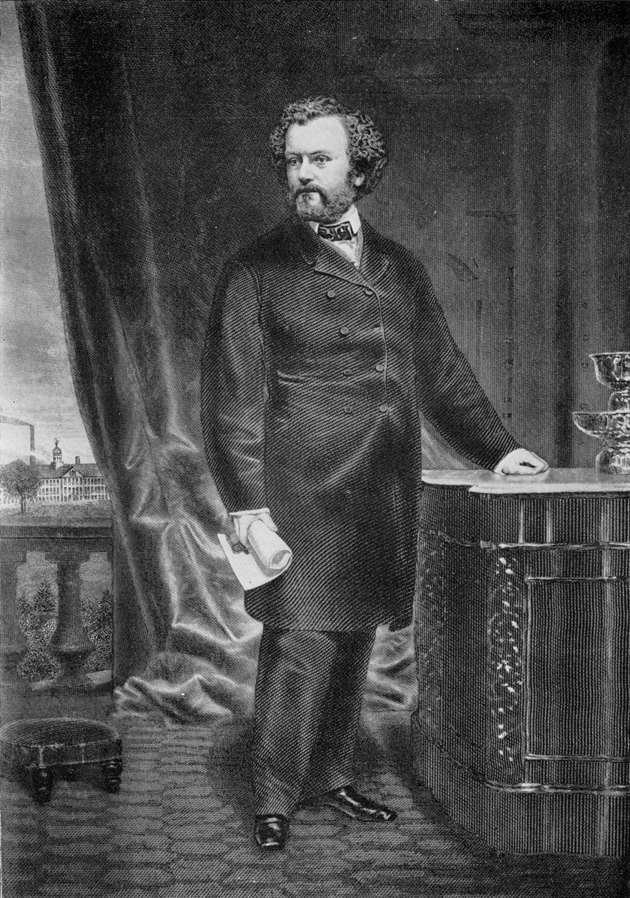|
Elmira Prison
Elmira Prison was originally a barracks for "Camp Rathbun" or "Camp Chemung", a key muster and training point for the Union Army during the American Civil War, between 1861 and 1864. The site was selected partially due to its proximity to the Erie Railroad and the Northern Central Railway, which crisscrossed in the midst of the city. The Camp fell into disuse as the war progressed, but its "Barracks #3" was converted into a military prison in the summer of 1864. It was the prison holding the largest number of Confederate POWs. Its capacity was 4,000, but it held 12,000 within one month of opening. A different source says that Camp Rathbun had a capacity of 6,000 recruits, but that it was turned into a prison for 10,000 and the Union Commissary General was given just 10 days to make it happen. The prison camp, in use from July 6, 1864, until July 11, 1865 (date of last arrival), was dubbed "Hellmira" by its inmates. During those 12 months, 2,970 of the 12,100 prisoners died from ... [...More Info...] [...Related Items...] OR: [Wikipedia] [Google] [Baidu] |
American Civil War Prison Camps
Between 1861 and 1865, American Civil War prison camps were operated by the Union and the Confederacy to detain over 400,000 captured soldiers. From the start of the Civil War through to 1863 a parole exchange system saw most prisoners of war swapped relatively quickly. However, from 1863 this broke down following the Confederacy's refusal to treat black and white Union prisoners equally, leading to soaring numbers held on both sides. Records indicate the capture of 211,411 Union soldiers, with 16,668 paroled and 30,218 died in captivity; of Confederate soldiers, 462,684 were captured, 247,769 paroled and 25,976 died in captivity. Just over 12% of the captives in Northern prisons died, compared to 15.5% for Southern prisons. Lorien Foote has noted, "the suffering of prisoners did more to inhibit postwar reconciliation than any other episode of the war." Parole Lacking means for dealing with large numbers of captured troops early in the American Civil War, the Unio ... [...More Info...] [...Related Items...] OR: [Wikipedia] [Google] [Baidu] |
Chemung River
The Chemung River ( ) is a tributary of the Susquehanna River, approximately long,U.S. Geological Survey. National Hydrography Dataset high-resolution flowline dataThe National Map, accessed August 8, 2011 in south central New York and northern Pennsylvania in the United States. It drains a mountainous region of the northern Allegheny Plateau in the Southern Tier of New York. The valley of the river has long been an important manufacturing center in the region but has suffered a decline in the late 20th century. Description The Chemung River is formed near Painted Post in Steuben County, just west of Corning by the confluence of the Tioga River and Cohocton rivers. It flows generally east-southeast through Corning, Big Flats, Elmira, and Waverly. It crosses into northern Pennsylvania before joining the Susquehanna River approximately south of Sayre. The name of the river comes from a Lenape word meaning "at the horn" composed of the root ''chemu'' 'horn' and the suffix ' ... [...More Info...] [...Related Items...] OR: [Wikipedia] [Google] [Baidu] |
Box (torture)
The box, also known as a hot box or sweatbox, is a method of solitary confinement used in humid and arid regions as a method of punishment. Anyone placed in one would experience extreme heat, dehydration, heat exhaustion, or even death, depending on when and how long one was kept in the box. Another variation of this punishment is known as sweating, the use of a heated room to punish or coerce a person into cooperating with the torturers. Use * The technique was used by prisons in the Southern United States until late in the 19th century and as punishment during times of slavery. * The technique, then known as the "sweat box", was used in the Union Army during the American Civil War. * The North Vietnamese Army used the technique at the infamous Hanoi Hilton. * The CIA claims that the Chinese government has used "extreme heat" and "sweating" against dissidents. * Use of a "sweatbox" has also been reported as a method of punishment in North Korean concentration camps, notably in ... [...More Info...] [...Related Items...] OR: [Wikipedia] [Google] [Baidu] |
Southern Tier
The Southern Tier is a geographic subregion of the broader Upstate New York region of New York (state), New York State, consisting of counties west of the Catskill Mountains in Delaware County, New York, Delaware County and geographically situated along or very near the northern border of Pennsylvania. Definitions of the region vary widely, but generally encompass localities in counties surrounding the Binghamton, New York, Binghamton and Elmira, New York, Elmira-Corning (city), New York, Corning metropolitan areas. This region is bordered to the south by the Northern Tier (Pennsylvania), Northern Tier of Pennsylvania and both these regions together are known as the Twin Tiers. Constituent counties The eight counties almost always included in the Southern Tier are: Less frequently included in the "Southern Tier" designation are Schuyler County, New York, Schuyler County, Yates County, New York, Yates County (the regional sentiment is stronger throughout the southern portions ... [...More Info...] [...Related Items...] OR: [Wikipedia] [Google] [Baidu] |
Benjamin Franklin Tracy
Benjamin Franklin Tracy (April 26, 1830August 6, 1915) was a United States Politician, political figure who served as Secretary of the Navy from 1889 through 1893, during the administration of U.S. President Benjamin Harrison. Biography He was born in the hamlet of Apalachin located in the Town of Owego, New York on April 26, 1830. Tracy was a lawyer active in United States Republican Party, Republican Party politics during the 1850s. He was a member of the New York State Assembly (Tioga Co.) in 85th New York State Legislature, 1862. He served in the Union Army during the American Civil War, Civil War, and commanded the 109th New York Infantry Regiment. At the Battle of the Wilderness in May, 1864, he was able to rally his men and hold the Union line. For his actions he subsequently was awarded the Medal of Honor. His citation reads: Tracy "seized the colors and led the regiment when other regiments had retired and then reformed his line and held it." Later that year, he beca ... [...More Info...] [...Related Items...] OR: [Wikipedia] [Google] [Baidu] |
Pejorative
A pejorative or slur is a word or grammatical form expressing a negative or a disrespectful connotation, a low opinion, or a lack of respect toward someone or something. It is also used to express criticism, hostility, or disregard. Sometimes, a term is regarded as pejorative in some social or ethnic groups but not in others, or may be originally pejorative but later adopt a non-pejorative sense (or vice versa) in some or all contexts. Etymology The word ''pejorative'' is derived from a Late Latin past participle stem of ''peiorare'', meaning "to make worse", from ''peior'' "worse". Pejoration and melioration In historical linguistics, the process of an inoffensive word becoming pejorative is a form of semantic drift known as pejoration. An example of pejoration is the shift in meaning of the word ''silly'' from meaning that a person was happy and fortunate to meaning that they are foolish and unsophisticated. The process of pejoration can repeat itself around a single conc ... [...More Info...] [...Related Items...] OR: [Wikipedia] [Google] [Baidu] |
Triage
In medicine, triage () is a practice invoked when acute care cannot be provided for lack of resources. The process rations care towards those who are most in need of immediate care, and who benefit most from it. More generally it refers to prioritisation of medical care as a whole. In its acute form it is most often required on the battlefield, during a pandemic, or at peacetime when an accident results in a mass casualty which swamps nearby healthcare facilities' capacity. Triage always follows the modern interpretation of the Hippocratic oath, but otherwise there is plenty of leeway in interpretation, leading to more than one simultaneous idea of its nature. The best settled theories and practical scoring systems used in here come from the area of acute physical trauma in an emergency room setting; a broken bone obviously counts for less than uncontrolled arterial bleeding, apt to lead to death. But no current principle carries too well over to mental health, reproductive ... [...More Info...] [...Related Items...] OR: [Wikipedia] [Google] [Baidu] |
Jersey City, New Jersey
Jersey City is the second-most populous city (New Jersey), city in the U.S. state of New Jersey, after Newark, New Jersey, Newark.The Counties and Most Populous Cities and Townships in 2010 in New Jersey: 2000 and 2010 , United States Census Bureau. Accessed November 7, 2011. It is the county seat of Hudson County, New Jersey, Hudson County and the county's largest city.New Jersey County Map New Jersey Department of State. Accessed July 10, 2017. The city's population as of the 2020 United States census was 283,927, which represents an increase of 18.1% from the 2 ... [...More Info...] [...Related Items...] OR: [Wikipedia] [Google] [Baidu] |
Point Lookout State Park
Point Lookout State Park is a public recreation area and historic preserve occupying Point Lookout, the southernmost tip of a peninsula formed by the confluence of Chesapeake Bay and the Potomac River in St. Mary's County, Maryland. The state park preserves the site of an American Civil War prisoner of war camp and the Point Lookout Light, which was built in 1830. It is the southernmost spot on Maryland's western shore, the coastal region on the western side of the Chesapeake Bay. The park is currently closed for renovations. Colonial period Captain John Smith, the famed explorer who surveyed the Mid-Atlantic region for the British Crown, came ashore at Point Lookout in 1608. He surveyed the lands and waters of the area, including the mouth of the Potomac River on the south side of Point Lookout and its small nearby tributary, the St. Mary's River. Smith gave very favorable reports on the area to the king of England, remarking on the abundant game and fishing opportunities, ... [...More Info...] [...Related Items...] OR: [Wikipedia] [Google] [Baidu] |
Samuel Colt
Samuel Colt (; July 19, 1814 – January 10, 1862) was an American inventor, industrialist, and businessman who established Colt's Patent Fire-Arms Manufacturing Company (now Colt's Manufacturing Company) and made the mass production of revolvers commercially viable. Colt's first two business ventures were producing firearms in Paterson, New Jersey, and making underwater mines; both ended in disappointment. His business affairs improved rapidly after 1847, when the Texas Rangers ordered 1,000 revolvers during the American war with Mexico. Later, his firearms were used widely during the settling of the western frontier. Colt died in 1862 as one of the wealthiest men in America. Colt's manufacturing methods were sophisticated. His use of interchangeable parts helped him become one of the first to use the assembly line efficiently. Moreover, his innovative use of art, celebrity endorsements, and corporate gifts to promote his wares made him a pioneer of advertising, p ... [...More Info...] [...Related Items...] OR: [Wikipedia] [Google] [Baidu] |
Henry V
Henry V may refer to: People * Henry V, Duke of Bavaria (died 1026) * Henry V, Holy Roman Emperor (1081/86–1125) * Henry V, Duke of Carinthia (died 1161) * Henry V, Count Palatine of the Rhine (c. 1173–1227) * Henry V, Count of Luxembourg (1216–1281) * Henry V, Duke of Legnica (c. 1248–1296) * Henry V, Count of Gorizia (died 1362) * Henry V of Iron (c. 1319–1369), Duke of Żagań, half-Głogów, and half-Ścinawa * Henry V of England (1386–1422) * Henry V of Rosenberg (1456–1489) * Henry V, Duke of Mecklenburg (1479–1552) * Henry V, Duke of Brunswick-Lüneburg Henry V of Brunswick-Wolfenbüttel ( la, Henricus; 10 November 1489 – 11 June 1568), called the Younger, (''Heinrich der Jüngere''), a member of the House of Welf, was Duke of Brunswick-Lüneburg and ruling Prince of Brunswick-Wolfenbüttel f ... (1489–1568) * Henry V, Burgrave of Plauen (1533–1568) * Henri, Count of Chambord, nominally Henry V of France, (1820–1883) Shakespeare * ''Henry V' ... [...More Info...] [...Related Items...] OR: [Wikipedia] [Google] [Baidu] |
William Hoffman (United States Army)
William Hoffman (1807–1884) was a 19th-century officer in the United States Army. The West Point graduate was involved in the Black Hawk War, Seminole Wars, Mexican–American War and the American Civil War. During the Civil War he served as the Commissary-General of Prisoners and set policy for the treatment and release of prisoners.Buescher, John.Who Earned a Medal for Cutting Costs by Starving Confederate Prisoners? accessed September 24, 2011. Biography Early life and education William Hoffman Jr. was born in New York. He was the son of Lieutenant Colonel William Hoffman Sr., who fought in the |







